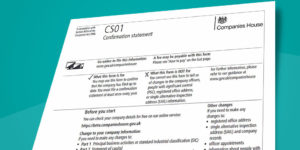Enterprise Management Incentive (EMI) schemes are share option schemes for employees. They allow qualifying private companies to offer their staff equity in the business in a tax-efficient way.
Small business owners looking to grow, retain, and incentivise their teams could benefit from granting EMI options. In this blog, we explain what these are, how they work, and how to set them up.
What are Enterprise Management Incentive schemes and how do they work?
EMI schemes are generally considered one of the most tax-advantaged ways for qualifying companies to give employees an option to purchase shares at a later date. They are specifically designed for high-growth small businesses and start-ups, helping them attract top talent, promote staff loyalty, and expand rapidly, all without a significant layout of cash.
Enterprise Management Incentive schemes give employees the option to buy shares in the company at some point in the future. Employees do not have to buy the shares; but if they do, they can purchase them at today’s price, even if their value has increased by the time they are bought.
This is because when EMI share options are granted, the market value of the shares under the option is agreed with HMRC and used as the exercise price, which the employee will pay to exercise their option.
- Tax implications of transferring shares to your spouse or partner
- 2024-25 tax guide for UK business owners
- Most tax-efficient director’s salary and dividends for 2024-25
Subject to the overall company cap of £3 million, you may grant each qualifying employee EMI share options worth up to a total unrestricted market value of £250,000 (although any CSOP options the employee has will also count towards this). Where the full £250,000 worth of options have been granted, the employee cannot be granted any further EMI options until 3 years have passed from the date the last of the options were granted.
So, what’s in it for the company?
EMI schemes are typically used to incentivise employee loyalty and reduce turnover and recruitment costs for the company.
Using an EMI scheme can be a cash-efficient way to bring in and retain top talent when the company is starting out and needs to conserve cash (as opposed to paying extremely high salaries or awarding top bonuses).
There may also be tax benefits that the company can take advantage of. These could include Corporation Tax Relief and savings on employer National Insurance contributions. You should discuss this with a tax specialist prior to setting up the EMI scheme to see which tax advantages are applicable.
Qualifying conditions for companies
To be a “qualifying company” for EMI purposes and be able to set up an EMI scheme and grant EMI options, you must meet all of the criteria that HMRC sets out, which can be found here: criteria for companies. This includes the following points:
- Your company must not be a 51% subsidiary.
- If you have one or more subsidiaries, they must all be qualifying companies.
- The gross value of your company’s assets must not exceed £30 million on the date the EMI option was granted.
- You must employ no more than 250 full-time equivalent employees.
- Your company must not operate substantially in an excluded industry. You can find the full list of excluded trading activities in the HMRC internal manual.
- Your company must be based in the UK.
- You must not exceed the maximum limit of £3 million worth of unexercised EMI share options at any one time.
Please note that the above is a brief introduction, and in practice, the requirements can become complex. You should seek legal advice on your eligibility prior to implementing the scheme.
Qualifying criteria for employees
Below is a summary of the conditions that employees need to satisfy to be eligible to be granted EMI options:
- They must be legally employed by your company or a qualifying subsidiary company
- They must be a UK tax resident
- They must work at least 25 hours a week (or 75% of their weekly working time)
- They must not hold or be entitled to more than 30% of company shares (known as material interest)
- The total unrestricted market value of all CSOP and EMI options held by them must not exceed £250,000
Disqualifying events
A disqualifying event is an event that disqualifies an option from EMI tax relief. It includes circumstances such as an employee leaving their employment or working part-time, certain changes to the terms of the option, or the company becoming substantially involved in an excluded trade.
The government website provides a full list of disqualifying options that may affect your company. We recommend that you seek legal and tax advice regarding any disqualifying events and how they will affect your company.
How to set up an EMI scheme
Once you have established that the company and employees are eligible, you can set up your Enterprise Management Incentive scheme.
This is generally done by instructing a solicitor to advise on the structure of your EMI scheme, prepare the relevant documents and grant the EMI options. At the same time, you should instruct a tax specialist to prepare and agree on an EMI valuation with HMRC.
The final step is to tell HMRC about your EMI scheme and register the EMI options. Your solicitor or tax specialist should be able to do this for you.
Managing the scheme
You must keep your records up to date, as you will need to submit an annual ERS return to HMRC every year to inform them of the status of the scheme and the options (even if no changes have been made).
We highly recommend that you instruct a solicitor or tax specialist to maintain these records for you and submit the annual statement on behalf of your company.
Benefits of Enterprise Management Incentive schemes
So, what exactly are the benefits of setting up an EMI scheme? Whilst we have touched on a few already, below are some of the biggest advantages that EMI schemes provide for small businesses:
- This scheme can provide tax benefits to employers and employees. You should discuss the availability of these tax benefits with a tax specialist prior to setting up your EMI scheme.
- Your company can attract new talent and stand out to new recruits by offering employees a share of ownership in the company.
- The initial cash outlay in setting up a scheme can be less than having to pay out large salaries and bonuses.
- EMI schemes are typically used to incentivise employees to stay loyal to the company. With the right EMI scheme, you can retain talented staff to keep driving your business forward and avoid having to spend time and money on replacing team members.
- EMI schemes are an excellent way to reward hard workers and share your company’s success with them.
- Employees are likely to be more productive when they have a potential portion of company ownership – this helps to align their goals and values with the company’s.
- Staff are not only more productive but also more engaged in the business when they have a personal interest in it.
- EMI schemes can be somewhat flexible, and instructing a solicitor will help ensure that the scheme is right for you, your business, and your staff.
Thanks for reading
In conclusion, Enterprise Management Incentive schemes are regarded to be a tax-efficient way to give your team the option to purchase a share of the company. This can be used to provide compelling incentives for employees and retain top talent. The process can be complex and time-consuming for business owners, so you should always take the advice of both a lawyer and tax specialist before attempting to put an EMI scheme in place.
Disclaimer
Please note that the information provided on this blog is for general informational purposes only and does not constitute legal, tax, or professional advice. While our aim is that the content is accurate and up-to-date, it should not be relied upon as a substitute for tailored advice from qualified professionals.
We strongly recommend that you seek independent legal and tax advice specific to your circumstances before acting on any information contained in this blog.
We accept no responsibility or liability for any loss or damage that may result from your reliance on the information provided herein. Use of this blog and the information contained within is entirely at your own risk.
Please note that the information provided in this article is for general informational purposes only and does not constitute legal, tax, or professional advice. While our aim is that the content is accurate and up to date, it should not be relied upon as a substitute for tailored advice from qualified professionals. We strongly recommend that you seek independent legal and tax advice specific to your circumstances before acting on any information contained in this article. We accept no responsibility or liability for any loss or damage that may result from your reliance on the information provided in this article. Use of the information contained in this article is entirely at your own risk.















Join The Discussion